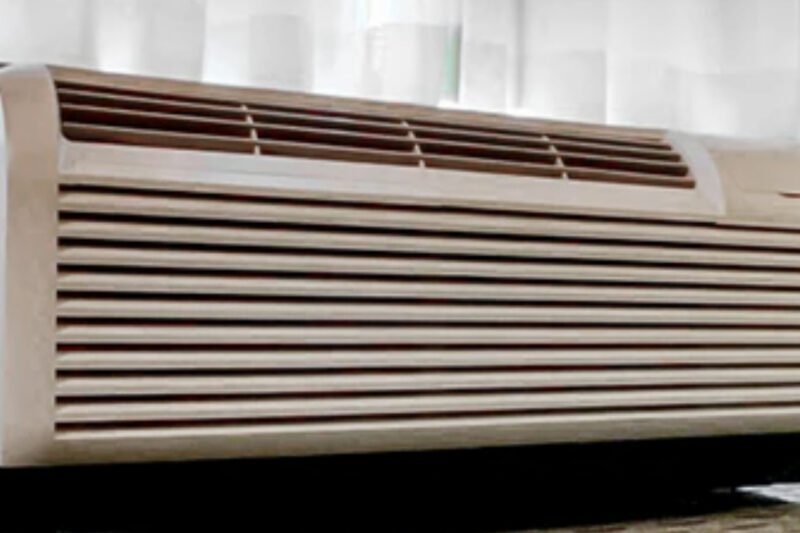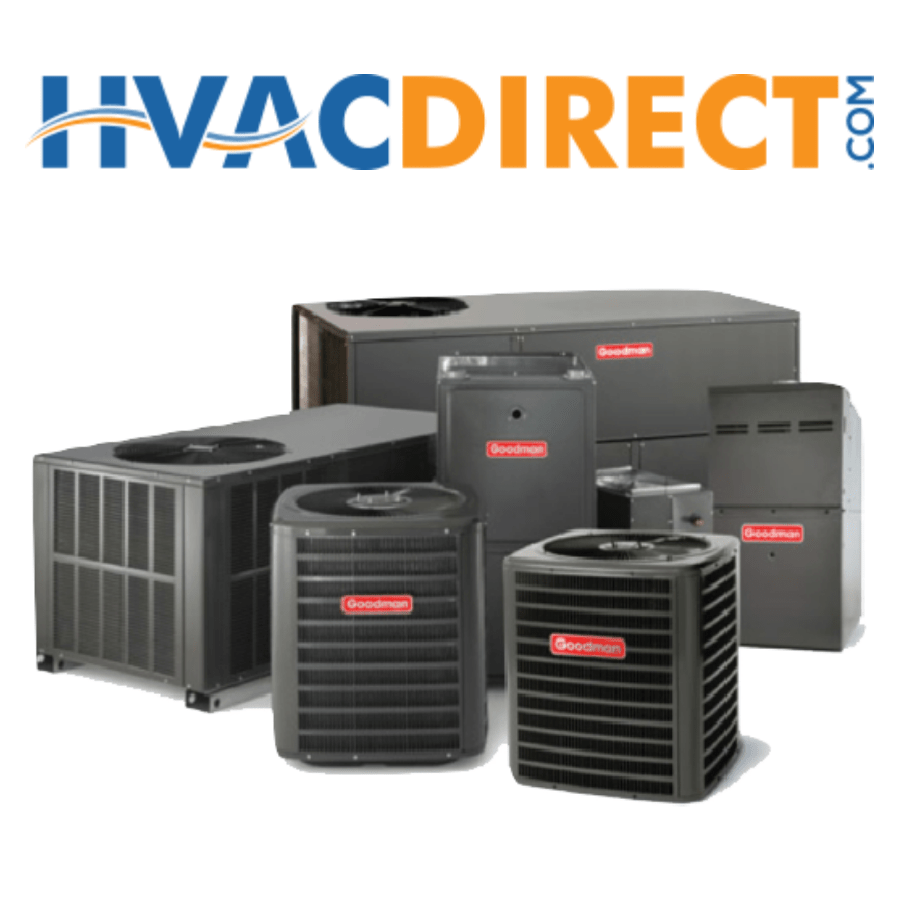Packaged terminal air conditioner units, abbreviated as PTAC, are energy-efficient options for cooling and heating spaces that do not require ductwork. Packaged terminal air conditioners are the answer to ensuring long-term comfort in your space, whether you’re renovating an old home, replacing an existing model, or installing a guest room for family and guests. Continue reading our article to learn How To Choose A PTAC Unit, and please call our specialists at (929) 447-2077 if you have any questions.
Packaged terminal air conditioner units are space-saving equipment that gives significant relief—whether heating or cooling—to the rooms they are in. Hotels and non-AC houses employ them. These ductless air conditioners are installed through the wall near the floor of your room with the controls facing inside and the grill facing outside.
If you’re looking for a new packaged terminal air conditioner and don’t know where to start, this article will offer you all you need to know, from installation recommendations to brand comparisons.
How Does A PTAC Operate?
Cool-only or dual heat/cool packaged terminal air conditioners match specific applications. PTAC compressors circulate refrigerant to chill the space. To condition space, the refrigerant cools the coils of the unit, forcing heat and humidity outside. To warm up a room, the refrigerant will heat the coils, which will have the reverse effect of forcing the air that passes through into the space.
Packaged terminal air conditioners could employ heat pumps or electric heat to keep your home warm. Heat pump versions often employ a four-way valve to reverse refrigerants’ flow and cooling cycle, giving additional heat to homes in temperate areas. Electric heat units contain an additional heating element near the vents and are often considerably quieter and last longer than heat pumps. Models with heat pumps, on the other hand, have grown in popularity due to their energy-efficient functioning.
What to Think About When Buying a Packaged Terminal Air Conditioner
Choosing the proper model for your home is critical to stay comfortable and saving energy. When selecting a PTAC, there are a few factors to consider.
Cost
These units are the finest competitors if you’re looking for an energy-saving alternative to keeping your room comfortable all year. Using a bundled terminal air conditioner, which includes both heating and cooling, can help you save up to 20% on the PTAC installation cost and annual utility bills. If you simply want to use the excellent function, a window air conditioner may be a better investment. PTACs cost more and require an external sleeve and grille.
Because the wall cannot support the air conditioner on its own, wall sleeves are used to keep it in place. Grilles differ only in appearance, not functionality, thus appearance is the only factor to consider when selecting one. If you are replacing an older PTAC model, the sleeve and grille are most likely reusable.
Output of BTUs
One of the first things you should consider is how many BTUs, or British Thermal Units, your room will require. You’ll need to use a BTU calculator for this. The output of your ideal PTAC is determined by the size of the room to be conditioned. Choosing a unit with the appropriate number of BTUs is critical to preventing the space from becoming overly humid. While it may appear that utilizing a higher-than-required BTU appliance is a good idea, it is not! Buying a PTAC with too much power can result in uncomfortable humidity and compromise the unit’s overall operation. An air conditioner that isn’t powerful enough for your room may use more energy than necessary, overworking the machine and shortening its lifespan.
Types of Adapters
When installing a new PTAC in your room, it’s critical to consider the plug type that each item requires. When choosing a packaged terminal air conditioner, you have three amperage options: 15 amp, 20 amp, and 30 amp. Your PTAC unit can either be plugged in or hard-wired to the building’s electricity. When looking for a site to put the unit, ensure sure the plug type is compatible with the outlet you want to use. Check the data plate on the chassis to ascertain the amp draw if you’re replacing an existing conditioner, and make sure the plug matches the one already in use.
EER and SEER Scores
Energy efficiency is measured by EER and SEER. A unit with a higher rating is more energy efficient. Split systems and interior units ducted to outdoor units display SEERs, while packaged air conditioners display EERs. Because each rating has its testing method, it cannot be switched.
Double Fan Systems
PTAC units are available with either a one-fan or two-fan configuration. Two-fan systems are quieter with one fan on the condenser side and one on the evaporator side. Selecting the fan system is the only method to guarantee a quieter system as most big brands have similar noise levels. PTAC businesses utilize data to compute noise levels, but their testing processes vary, therefore there is no uniformity.
Drainage Kits
Drain kits include drain fittings, gaskets, and spouts that connect to the base pan of a packaged terminal air conditioner. Although Amana ptac drain kit installation is not required, they can assist in preventing excess condensate from pouring onto the ground. Most condensate returns to the coil, but some seep out the rear grille for efficiency. A drain kit can channel moisture via a hose. Large hotels and residences use these packages.
Thermostats with Remote Control
While PTACs include built-in thermostats, remote thermostats provide additional convenience by allowing you to tailor your space. Before drywalling, install the thermostat wire. For pre-built room air conditioners, appliance suppliers offer wall-mounted thermostats.
Give your guests a memorable stay while saving money on heating and cooling. Consider room size, cooling power, dimensions, and sustainability when selecting the best packaged terminal air conditioner (PTAC) for your hotel. Correctly sized units heat and cool effectively, efficiently, and comfortably. For more info, call our PTAC unit installation experts at (929) 447-2077 or visit our website to learn Which PTAC Units Are The Quietest.



No Comments
Be the first to start a conversation